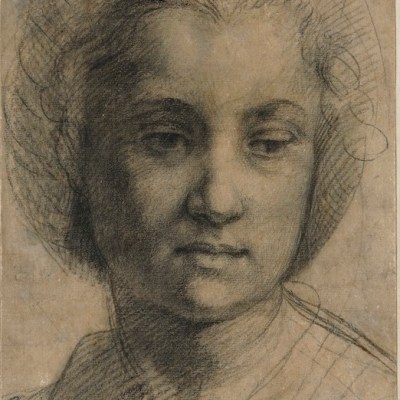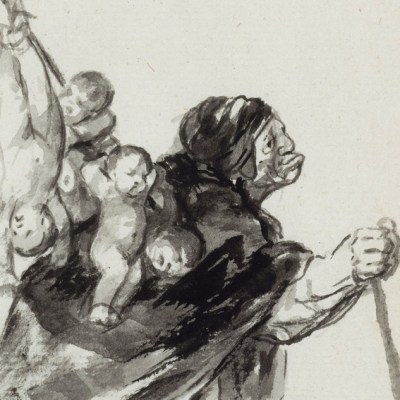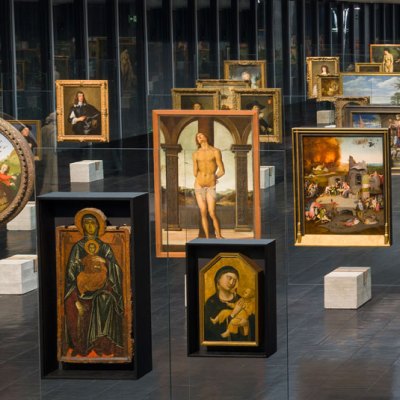When the curator of this excellent exhibition, Stefaan Hautekeete, was asked to give the show a name, he was stumped. There is one drawing by Rubens – an economic, elegant design for an engraving of the Descent of the Holy Spirit, with startled apostles – and one by Jordaens and one by a pupil of Rembrandt, Willem Drost (1633–59), but very few others among the 65 artists represented here are well-known names. Many are ‘circle of’ or ‘attributed to’, or even ‘unknown’. Even Frans Floris (c. 1519–70), a leading Flemish painter of his time much in demand for his smooth, Italianate history paintings, is hardly a household name today.
Far from being a drawback, however, this absence of big names is one of the joys of the exhibition. These 87 sheets show the strength and depth of drawing in the Netherlands between 1475 and the late 17th century. The selection emphasises the variety of styles, subjects, and techniques and also the range of purposes for which drawings were created, whether as sketches for paintings, or finished designs for etchings; as designs for silver, or cartoons for tapestries; or beautiful artworks in their own right. Among these artists there are many stars – Pieter Coecke van Aelst (1502–50), Maarten van Heemskerck (1498–1574), Frans Pourbus the Elder (1545–81), Paul Bril (1553–1626), and the wonderful Abraham van Diepenbeeck (1596–1675), for instance. His circular design for a silver vessel, deftly interweaving Neptune and Amphitrite, tritons, water nymphs, and putti, with its strong plasticity and sense of movement, is a highlight.
The exhibition is the first the Royal Museums of Fine Arts of Belgium has ever organised of a private collection. It was enabled by a grant from the charitable King Baudouin Foundation, which has acquired two of the drawings, now on extended loan to the museum. A third has been donated directly to the Royal Museums. The anonymous collector’s complete collection of 300 drawings perfectly complements the museum’s holdings, offering strength across both northern and southern Netherlandish drawings in the 17th century, where the museum has less material, and, in the 17th century, strength in Flemish drawings, where the museum has a wealth of northern material. Hautekeete jokes, ‘I saw many sheets I have tried to buy at auction for the museum over the years.’ The grant has also enabled much scholarly investigation of the drawings, many of which have been reattributed. The findings are summarised in the catalogue to the exhibition, which is an essential guide. Copies are available to consult, as, bar names, titles and dates there are very few wall captions to distract your eye from the drawings themselves.
The earliest work is a sensitive rendering of a female kneeling donor with a standing Saint Michael, here supposed to be a drawing from an unknown painting by a Flemish artist from the entourage of Rogier van der Weyden, with meticulously delineated drapery. It is a rare survivor from the 15th century, at the point when drawings were first beginning to be valued in their own right by collectors. From here the exhibition moves chronologically, through drawings reflecting the influence of Italian Renaissance art, to the graceful mannerism of the 1580s, on into the high baroque. The collector has a predilection for artists working in the international mannerist style, such as Hans Collaert the Elder (c. 1525–80) or Karel van Mander (1548–1606), but has a consistent eye for quality. It is remarkable to pass from the dramatic contortions of Maarten van Heemskerck’s The Stoning of the Elders (1562) to the delicate drawing on vellum of The Crucifixion (1599) by the Flemish Johannes Wierix to Cornelis de Vos’s tender, luminous Portrait of a Child (1625–30), drawings so different in style, mood and technique, but all masterpieces.
The exhibition is held in an inner gallery besides a room of vast baroque paintings by Rubens and his contemporaries. A small selection of drawings has been brought in here to make a link between these monochrome exercises and the flamboyant compositions around. One treasure is the charming design for an etching, Love Conquers Nature, by Otto van Veen, known as Rubens’s last master, whose delicate handling of brown oil paint, heightened with white body colour, as in this painterly drawing, inspired Rubens’s own oil sketches. The last few drawings show the growing importance of plein air sketching, as naturalistic landscape painting became an increasingly popular. As the catalogue notes, ‘It was not until the 17th century that connoisseurs took to collecting such studies of nature, for until then they had been considered mere sketches without value.’ As you see time as well as space captured in the shadowed and sun lit Landscape with Buildings near Brussels by Adriaen Frans Boudewijns (1644-1719), one can only be grateful that they then did and still do.
‘From Floris to Rubens: master drawings from a Belgian private collection‘ is at the Royal Museums of Fine Arts, Belgium, until 15 May.





